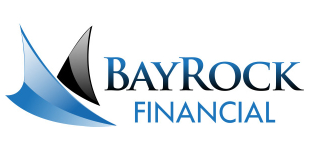529 Plan for Education Funding
There are generally 5 common ways to help fund your grandchildren’s education while also optimizing estate and tax planning, including the most popular type of account the 529 College Savings Plan.
At the end of this article, we’ve included information from Schwab.com for folks who want to set up a 529 Plan on their own without paying an advisory fee or sales commission to a “Financial Advisor”. As always, we suggest working with an Independent Fiduciary Advisor whenever Tax Planning or Estate Planning is involved.
The best method for you will depend on your personal circumstances, including your estate size, tax situation, and specific goals for the funds.
Here are 5 common approaches to consider:
529 College Savings Plans
-
Tax Benefits: Earnings in a 529 account grow tax-free, and withdrawals are also tax-free when used for qualified education expenses.
-
Control: The account owner retains control of the assets and can even change the beneficiary.
-
Estate Planning: Contributions to a 529 plan can be removed from your estate for tax purposes.
-
Limitations: Money can generally only be used for education expenses without incurring taxes and penalties.
Custodial Accounts (UGMA/UTMA)
-
Flexibility: These accounts offer more flexibility in how the money is used, compared to a 529 plan.
-
Taxation: Some earnings may be subject to the “kiddie tax,” which could potentially be a higher rate than the grandparents’ rate.
-
Control: Once the grandchild reaches the age of majority, they gain control of the account and can use it as they see fit, not just for educational purposes.
-
Estate Planning: Contributions are irrevocable gifts and can be removed from your estate.
Trusts
-
Control: A trust allows you to set very specific conditions for how the money is to be used.
-
Taxation: The trust may have its own tax rates, which can be higher.
-
Complexity: Setting up and administering a trust can be complicated and costly.
-
Estate Planning: Trust assets can be structured to stay outside of your taxable estate.
Direct Gifts
-
Simplicity: The simplest method, but has fewer tax advantages.
-
Limitations: Subject to the annual gift tax exclusion ($15,000 per person per year for 2022).
-
Control: Once gifted, you have no control over how the money is used.
Educational Gifting
-
Tuition Payments: You can pay the tuition directly to the educational institution, which doesn’t count toward the annual or lifetime gift tax exclusions.
Tax Considerations
Depending on the amounts involved, you may want to consider the impact of the lifetime estate and gift tax exclusion. As of 2022, the limit is $12.06 million per individual. Amounts above this are subject to federal estate and gift taxes.
Before making any decisions, it’s crucial to consult with a CERTIFIED FINANCIAL PLANNER™ Professional and tax professional who can tailor the advice specifically to your situation.
529 Plan for Education Funding Article by Investopedia
A 529 plan is a tax-advantaged savings plan designed to help pay for education. Originally limited to post-secondary education costs, it was expanded to cover K–12 education in 2017 and apprenticeship programs in 2019. After the Setting Every Community Up for Retirement Enhancement Act of 2019 (SECURE Act) and SECURE 2.0 of 2022, 529s can also be used to pay off student loans and fund a Roth IRA.12
The two major types of 529 plans are education savings plans and prepaid tuition plans.
Education savings plans grow tax-deferred, and withdrawals are tax-free if they’re used for qualified education expenses. Prepaid tuition plans allow the account owner to pay current tuition rates for future attendance at designated colleges and universities. That means that, most likely, you can lock in a lower cost of college attendance.
529 plans are also referred to as qualified tuition programs and Section 529 plans.
Key Takeaways
-
529 plans are tax-advantaged accounts that can be used to pay educational expenses from kindergarten through graduate school.3
-
There are two basic types of 529 plans: educational savings plans and prepaid tuition plans.
-
529 plans are sponsored and run by the 50 states and the District of Columbia. The rules and fees of 529 plans can differ by state.
-
529 plans can be purchased directly from a state or via a broker or financial advisor.
-
Starting on Jan. 1, 2024, up to $35,000 of leftover funds in a 529 account can be rolled over into a Roth IRA account, provided the fund is at least 15 years old.4
Understanding 529 Plans
Although 529 plans take their name from Section 529 of the federal tax code, the plans themselves are administered by the 50 states and the District of Columbia.
Anyone can open a 529 account, but they are typically established by parents or grandparents on behalf of a child or grandchild, who is the account’s beneficiary. In some states, the person who funds the account may be eligible for a state tax deduction for their contributions.
The money in a 529 plan grows on a tax-deferred basis until it is withdrawn. What’s more, as long as the money is used for qualified education expenses as defined by the IRS, those withdrawals aren’t subject to either state or federal taxes. In addition, some states may offer tax deductions on contributions.
In the case of K–12 students, tax-free withdrawals are limited to $10,000 per year.5
Since tax benefits vary depending on the state, it’s important that you check the details of any 529 plan to understand the specific tax benefits that you may or may not be entitled to.
Types of 529 Plans
The two main types of 529 plans have some significant differences.
Education Savings Plans
529 savings plans are the more common type. The account holder contributes money to the plan. That money is invested in a pre-set selection of investment options.
Account-holders can choose the investment (usually mutual funds) that they want to invest in. How those investments perform will determine how much the account value grows over time.
Many 529 plans offer target-date funds, which adjust their assets as the years go by, becoming more conservative as the beneficiary gets closer to college age.
Withdrawals from a 529 savings plan can be used for both college and K–12 qualified expenses. Qualified expenses include tuition, fees, room and board, and related costs.6
The SECURE Act of 2019 expanded tax-free 529 plan withdrawals to include registered apprenticeship program expenses and up to $10,000 in student loan debt repayment for both account beneficiaries and their siblings.2
And the SECURE Act of 2022, passed as part of the 2023 Omnibus funding bill, will permit rolling over up to $35,000 of unspent funds in a 529 account into a Roth IRA account, starting on Jan. 1, 2024. To qualify, the account must be at least 15 years old.71
Prepaid Tuition Plans
Prepaid tuition plans are offered by a limited number of states and some higher education institutions. They vary in their specifics, but the general principle is that they allow you to lock in tuition at current rates for a student who may not be attending college for years to come. Prepaid plans are not available for K–12 education.
As with 529 savings plans, prepaid tuition plans grow in value over time. Eventual withdrawals from the account used to pay tuition are not taxable. However, unlike savings plans, prepaid tuition plans do not cover the costs of room and board.
Prepaid tuition plans may place a restriction on which colleges they may be used for. The money in a savings plan, by contrast, can be used at almost any eligible institution.
In addition, the money paid into a prepaid tuition plan isn’t guaranteed by the federal government and may not be guaranteed by some states.6 Be sure you understand all aspects of the prepaid tuition plan.
There are no limits on how much you can contribute to a 529 account each year. However, many states put a cap on how much you can contribute in total. Those limits recently ranged from $235,000 to over $525,000.8
Tax Advantages of 529 Plans
Withdrawals from a 529 plan are exempt from federal and state income taxes, provided the money is used for qualified educational expenses.
Any other withdrawals are subject to taxes plus a 10% penalty, with exceptions for certain circumstances, such as death or disability.6
The money you contribute to a 529 plan isn’t tax deductible for federal income tax purposes. However, more than 30 states provide tax deductions or credits of varying amounts for contributions to a 529 plan.9
In general, you’ll need to invest in your home state’s plan if you want a state tax deduction or credit. If you’re willing to forgo a tax break, some states will allow you to invest in their plans as a non-resident.
Advantages and Disadvantages of 529 Plans
529 Plan Transferability Rules
529 plans have specific transferability rules governed by the federal tax code (Section 529).
The owner (typically you) may transfer to another 529 plan just once per year unless a beneficiary change is involved. You are not required to change plans to change beneficiaries. You may transfer the plan to another family member, who is defined as:
-
Son, daughter, stepchild, foster child, adopted child, or a descendant of any of them
-
Brother, sister, stepbrother, or stepsister
-
Father or mother or ancestor of either
-
Stepfather or stepmother
-
Son or daughter of a brother or sister
-
Brother or sister of father or mother
-
Son-in-law, daughter-in-law, father-in-law, mother-in-law, brother-in-law, or sister-in-law
-
The spouse of any individual listed above
-
First cousin
You aren’t restricted to investing in your own state’s 529 plan, but doing so may get you a tax break. Be sure to check out that plan first.
Special Considerations
As with other kinds of investing, the earlier you get started, the better. With a 529 plan, your money will have more time to grow and compound the sooner it’s opened and funded.
With a prepaid tuition plan, you’ll most likely be able to lock in a lower tuition rate compared to what you’d pay down the road, since many schools raise their prices every year.
If you have money left over in a 529 plan—for instance, if the beneficiary gets a substantial scholarship or decides not to go to college at all—you’ll have several options.
One is to change the beneficiary on the account to another relative who qualifies according to the transferability rules. Another is to keep the current beneficiary in case they change their mind about attending college or later go on to graduate school. If all students are done with school, you may use up to $10,000 to pay off federal or private student loans for the beneficiary or their siblings.
A fourth option, starting in Jan. 2024, is to transfer unspent funds to a Roth IRA account if your account meets the requirements for doing so. Finally, you can always cash in the account and pay the taxes and 10% penalty.
How Much Does a 529 Plan Cost?
States often charge an annual maintenance fee for a 529 plan. These have ranged from as little as $0 to $25.10 In addition, if you bought your 529 plan through a broker or advisor, they may charge you as much as 5% or more on the assets under management.11 The individual investments and funds that you have inside of your 529 may also charge ongoing fees. Look for low-cost mutual funds and ETFs to keep management fees low.
Who Maintains Control Over a 529 Plan?
A 529 plan is technically a custodial account. So, an adult custodian will control the funds for the benefit of a minor. The beneficiary can assume control over the 529 once they reach age 18. However, the funds must still be used for qualifying education expenses.
What Are Qualified Expenses for a 529 Plan?
Qualified expenses for a 529 plan include:12
-
College, graduate, or vocational school tuition and fees
-
Elementary or secondary school (K–12) tuition and fees
-
Books and school supplies
-
Student loan payments
-
Off-campus housing
-
Campus food and meal plans
-
Computers, internet, and software used for schoolwork (student attendance required)
-
Special needs and accessibility equipment for students
The Bottom Line
Creating a 529 plan gives you a tax-advantaged way to save for educational expenses from kindergarten to graduate school, including apprenticeship programs. Now there is a new option to move up to $35,000 of unspent funds into a Roth IRA account if the 529 account is 15 or more years old. With many options for using your 529 plan, they offer great flexibility and the potential for tax-advantaged growth for your future scholars.
The Schwab 529 Education Savings Plan
Start an education fund for your children or a family member with a Schwab 529 Education Savings Plan. You can open and contribute to almost any 529 plan, no matter what state you live in and regardless of your age or income.
Click here to Apply Now at Schwab.com
The Schwab 529 Education Savings Plan offers multiple investment options—each carefully built on Schwab’s asset allocation models and comprised of well-known mutual funds from multiple fund families intended to help provide diversification across stocks, bonds, industry segments, and investment styles.
You can choose an age-based option, which automatically adjusts the asset allocation mix as the child nears college age, or you can choose a static portfolio that sticks with a particular investment strategy based on your goals and risk tolerance.
With both of these options, you can select the type of funds—actively managed or index—that best suits your investing style. Choose an actively managed fund portfolio for a professionally managed investment with the potential to outperform the market, or select an index fund portfolio for a lower cost approach that tracks market performance.
-
Diversification strategies do not ensure a profit and do not protect against losses in declining market
With this account, you’ll get:
-
Tax advantages
-
Higher contribution limits than an education savings account
-
24/7 service and support
Investment Choices
Learn more about portfolio options, plan performance, or underlying funds.
-
Portfolio Options
-
Plan Performance
-
Underlying Funds
Account Pricing
-
$0 account open or maintenance fees. Other account fees, fund expenses, and brokerage commissions may apply.1
-
No account service fee – The Schwab 529 Education Savings Plan has no account service fee or enrollment fee. Other account fees, fund expenses, brokerage commissions and service fees may apply.1
-
Portfolio fee – The portfolio fee includes a program management fee plus underlying fund expenses. The annual total portfolio fees for the Schwab 529 Education Savings Plan range from 0.20% – 0.86%, depending on the investment you select.
Review all our account fees and minimums.
Common Questions
Have questions about the Schwab 529 Education Savings Plan? Here are responses to some of the most common questions we hear. If you have a question about your specific situation that is not answered here, please call us at 888-903-3863.
-
How do I contribute to and make changes in my account?
-
How do I contribute money to my 529 account on a one-time or recurring basis?
-
Do I have to live in a state to participate in that state’s 529 plan?
-
What happens if my child decides not to go to college or can’t use all the funds?
-
Will a 529 plan affect my child’s ability to qualify for financial aid?
-
Can I transfer my child’s existing custodial account (UTMA/UGMA) into a 529 plan?
Online Application Checklist
It’s helpful to have the following information on hand before you begin:
-
The Social Security number, date of birth, and address of your designated beneficiary.
-
Your Social Security number and date of birth, and the same for any joint account owner.
-
If you are setting up automatic deposits, you will need bank account information, including bank routing number, account number, and phone number.
-
Planning to fund your Schwab 529 Education Savings Plan account from your Schwab brokerage account? Have your Schwab One® account number ready, and be sure that your brokerage account has checking features included. If you don’t have this information, call 888-903-3863 for help.
College Funding Checklist
Your Guide to Financing Your Child’s Education
Navigating the financial complexities of funding your child’s college education can be daunting. Our comprehensive College Funding Checklist is designed to simplify the financial planning process for you. This resource offers valuable insights to help you make informed decisions and is an essential part of the holistic financial planning process.
Understanding Financial Aid Options
Federal Student Aid: If the cost of college exceeds your Expected Family Contribution (EFC) as calculated by the Free Application for Federal Student Aid (FAFSA), your child may qualify for Federal student aid, including Pell Grants, work-study programs, and Federal Supplemental Educational Opportunity Grants (FSEOG).
Grants, Scholarships, and Awards: Apply for these early since many are awarded on a first-come, first-served basis. The FAFSA form is often used by states and colleges to assess need and eligibility, so don’t forget to fill it out.
The Role of Family Gifts and Employment
Gifts from Relatives: Remember that direct payments of tuition aren’t subject to gift tax. However, gifts might be treated as the child’s income and can affect needs-based financial aid eligibility.
Military Service: Benefits may be available if you or your spouse have served in the military. Also, ROTC programs can cover most college costs in exchange for service commitments.
Loans and Loan Forgiveness
Prioritize loans with favorable terms. The best options generally include Federal Direct Subsidized Loans, Unsubsidized Loans, PLUS Loans, and then private loans from banks or states. If your child plans to work in the public sector, they may be eligible for Public Service Loan Forgiveness.
Tax Considerations and Retirement Accounts
Tax Credits: Depending on your Modified Adjusted Gross Income (MAGI), you may be eligible for education tax credits like the American Opportunity Tax Credit.
IRA and Roth IRA: These can be utilized to pay for qualified education expenses without a 10% penalty, although ordinary income taxes may apply.
Special Circumstances
Divorced or Separated: Financial aid calculations may vary. FAFSA considers the income of the custodial parent, while the CSS Profile might require information from the non-custodial parent.
Financial Changes: If your financial situation changes after receiving the financial aid decision, consider appealing it.
How Our College Funding Checklist Can Help
Our College Funding Checklist is crafted to guide you through each stage of financial planning for your child’s education. It aims to take the guesswork out of this critical life event, fitting seamlessly into your overall financial planning strategy.
Call to Action
For an Instant Download of our College Funding Checklist, click here now.. To have a free consultation with Jim Munchbach, a CERTIFIED FINANCIAL PLANNER™ Professional, book an appointment on Jim’s calendar.
To learn more about Jim Munchbach, CFP® Professional, click here.
This guide is designed to be a starting point on your journey towards securing your child’s educational future.
529 Plan Tax Checklist
StreamlineYour Financial Planning Process for Education Expenses
Planning for your child’s education can be a challenging process, especially when it comes to navigating the tax implications of a 529 Plan. Incorporating a checklist into your financial planning process can serve as an excellent roadmap, taking the guesswork out of a potentially complex endeavor. That’s why we’ve created this 529 Plan Tax Checklist, a financial planning resource specifically aimed at helping you understand your tax liabilities and benefits in the context of education funding.
What Qualifies as an Education Expense?
The types of expenses that are considered “qualified” under a 529 Plan include tuition and fees for higher education and up to $10,000/year for elementary or secondary school. Additionally, expenses like room and board, if the student is enrolled at least half-time, and books and supplies required for attendance or enrollment, are qualified.
Do You Have Any Adjustments?
If you have received scholarships, grants, or educational assistance from employers or veterans’ programs, these amounts need to be deducted from your Qualified Education Expenses (QEE). The resultant figure is your Adjusted Qualified Education Expenses (AQEE).
Tax Credits and Your AQEE
Tax credits such as the American Opportunity Tax Credit or the Lifetime Learning Tax Credit can affect your AQEE. If you have claimed any of these credits, you’ll need to reduce your AQEE by the amount for which credit was claimed, up to specific limits ($10,000 or $4,000, respectively).
How Much of Your 529 Plan Distribution is Taxable?
The portion of your 529 Plan distribution that is taxable as ordinary income can be calculated using the formula:

Special Circumstances
In instances where the beneficiary has passed away, become terminally ill, or disabled, there are specific tax rules that apply. For example, gains in such cases are generally taxed as ordinary income but without any additional penalty. Moreover, up to $17,000/year can be rolled over to a 529A ABLE account without incurring a penalty if the beneficiary is disabled.
Apprenticeships and Student Loan Repayments
If you’re enrolled in an apprenticeship program that’s registered with the Department of Labor, the fees, books, supplies, and required equipment qualify as expenses. Also, a lifetime limit of up to $10,000 can be used to repay student loans, with an additional $10,000 allowed for each of the beneficiary’s siblings.
Instant Download and Consultation
Navigate this financial planning complexity with our Instant Download of the 529 Plan Tax Checklist. For a more personalized consultation, schedule a free session with Jim Munchbach, CERTIFIED FINANCIAL PLANNER™ Professional, through this calendar.
To learn more about Jim Munchbach, CFP® Professional, click here.
Take control of your financial future and ensure you are making the most out of your education investments by understanding your 529 Plan’s tax implications. This guide is designed to fit seamlessly into your financial planning process, providing clarity and confidence as you prepare for this critical life event.





